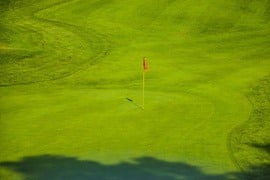Nitrogen fertility and growth regulators can have positive impacts on management of this potentially devastating disease. Ptthracnose is a disease on many turf grass species throughout the world, but is particularly severe on weakened or senescent annual bluegrass (Poa annua L.) turf Anthracnose is caused by the fungus Colletotrichum cereale (Manns, Crouch, Clarke, and Hillman), which persists in turf as a saprophyte in thatch or infected plant material. Typically, the fungus can become pathogenic and infect leaf, stem, or root tissue when an environment of high humidity or extended leaf wetness coincides with plant stress.
Symptoms can be observed throughout the year, but they are most intense between June and September in temperate and transitional climatic zones.
Click Here to view the Cultural management of Anthracnose on Annual Bluegrass greens PDF.

